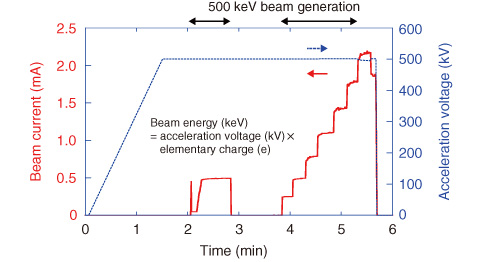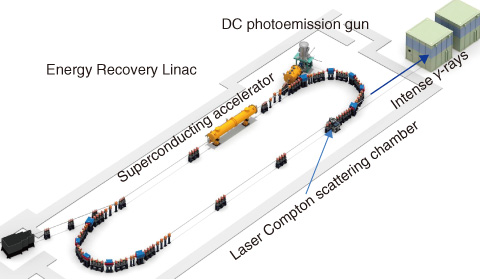
Fig.5-12 Generation of a 500 keV electron beam

Fig.5-13 γ-ray source based on energy recovery linac
The quantification of fissile materials such as uranium-235 (235U), plutonium-239 (239Pu), and minor actinides in spent fuel assemblies requires isotope-specific identification. We propose the use of nuclear resonance fluorescence (NRF) to identify the isotopic composition of sample materials nondestructively. A mono-energetic γ-ray beam tuned to the resonance state of the target nuclear isotope is injected into the spent fuels, and NRF γ-rays generated spherically from the fuels are detected with a γ-ray detector.
The proposed nondestructive isotope identification system requires a high-intensity mono-energetic γ-ray beam. Although a mono-energetic γ-ray beam can be generated using a conventional laser Compton scattering technique, the generation of a high-intensity γ-ray beam requires an electron beam of unprecedentedly high brightness, which can be generated with an advanced accelerator system known as the energy recovery linac (ERL). A technological challenge of the ERL system, which we have addressed, is the development of a high-brightness, high-current electron gun.
The generation of high-brightness beam requires a gun exit energy of ≧500 keV to avoid the beam degradation that occurs due to nonlinear space charge effect. The gun operational voltage has, however, been limited to 350 keV because of a discharge problem. We have successfully solved this problem by employing a segmented insulator and optimizing the gun configuration.
Fig.5-12 shows the result of a beam generation test. The electron beam is generated upon laser irradiation. The beam current is proportional to the laser power. As shown in the figure, we successfully generated a 500 keV electron beam with a current of up to 2 mA.
The gun was recently moved to the compact ERL (cERL) facility at KEK, where it is connected to an adjoining superconducting accelerator, as shown in Fig.5-13. Mono-energetic γ-ray generation using Compton scattering will be commenced next year.
This work was supported by the Ministry of Education, Culture, Sports, Science and Technology of Japan (MEXT), Quantum Beam Technology Program, “Development of a next-generation compact, high-brilliance light source using superconducting accelerator technology” and partially supported by the Japan Society for the Promotion of Science (JSPS) KAKENHI Grant-in-Aid for Scientific Research (C) No.23540353, “Study of micro-bunching instability using sub-picosecond bunch measurement.”